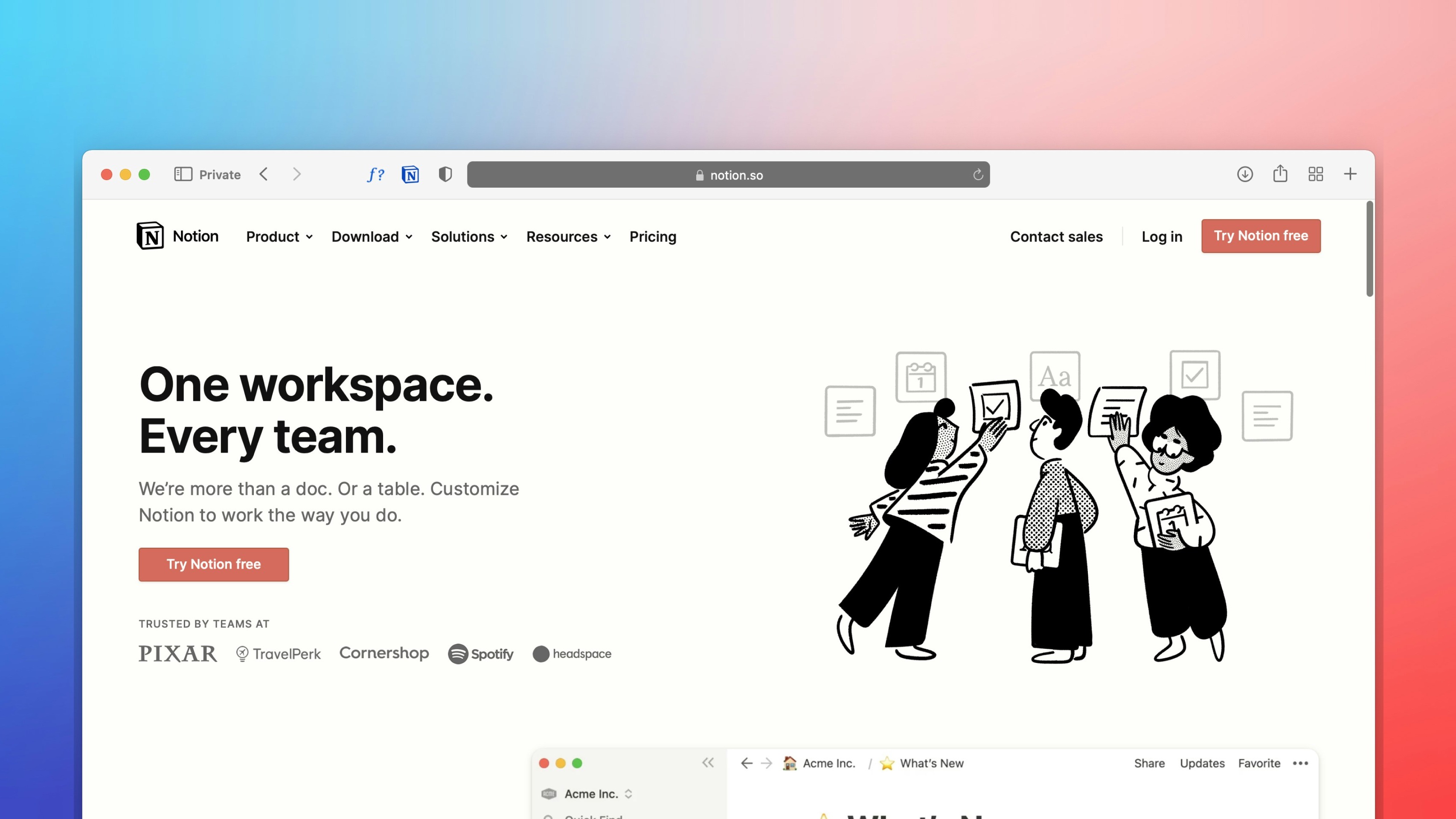 Freelancer tips
Freelancer tips Notion: What It Is, What It’s For, and How to Use It in Your Daily Life
Want to better organize your life and work? Notion can help boost your productivity. Click here to discover what this software is and what it’s used for.



You may have seen many writers say that choosing the right work platform can make a difference in your career, and it's true. That's why we’re putting Upwork and Workana head to head, as these are two of the most popular options for freelancers.
However, they cater to different markets, and their features are unique. On one hand, Upwork offers greater global exposure, while finding jobs on Workana might be easier.
But that’s not all you should pay attention to.
It’s important to understand the advantages of both Upwork and Workana, and the differences between them, to determine which one aligns best with your needs and goals. Today, we’ll tell you which points to consider, which platform has more job offers, and other key aspects.
Choosing between Upwork and Workana can be challenging, as both are great platforms for freelancing. That’s why, before making your decision, you should analyze several factors.
Below, we’ll dive deep into each of them, but first, let’s start with a definition.
Upwork is a globally recognized website designed for freelancers, with a strong international presence. Thanks to its millions of users, it’s one of the largest platforms for finding work.
The company connects freelancers from various fields with businesses or potential clients worldwide. This offers a wide range of job opportunities in sectors such as programming, writing, graphic design, marketing, and many other professions.
Workana is a freelancing platform that is more focused on the Latin American community. Its reputation centers around Spanish-speaking clients and freelancers, even though its user base is not as vast as Upwork’s.
It also allows freelancers and businesses or entrepreneurs to connect for specific projects. Here, you can also find opportunities in various categories like translation, design, web development, and digital marketing.
While both offer a good number and variety of jobs, their characteristics and markets differ. So, the decision depends on what you are looking for.
On Upwork, there may be a greater number of projects since it’s one of the largest global platforms.
Here, you can access job offers from many countries, both in English and Spanish. Often, the pay is better, as the main currency is the US dollar, but the competition is tougher.
One of Workana's advantages is that it offers more opportunities to work with Spanish-speaking clients and locals. This gives you the chance to establish closer relationships with companies or entrepreneurs in the region.
Although the number of projects or job offers is lower than on Upwork, the competition wouldn’t be as fierce. Also, Workana Mexico allows you to get paid through local methods and also in US dollars.
So, when comparing Upwork vs. Workana, Upwork wins in terms of global job opportunities.
Workana stands out for offering an intuitive design with a simplified approach that is appealing to freelancers.
The website is well-organized, and the job listings are detailed. This means that finding jobs on Workana is easy, as is communicating with clients, making it ideal for beginners.
Upwork, on the other hand, is also intuitive and has various features. But it can be more complex due to its size and variety of options, and the language it uses is English. Although if you want Upwork in Spanish, you can search on Google for "Translate this page."
Once you get the hang of using the platform, finding jobs suited to your profile becomes quicker. Still, in terms of ease of use, Workana is more accessible and user-friendly.
Signing up for Upwork or Workana is free. You can create your profile, access the platform, and apply for projects without any initial cost.
They also have paid subscriptions if you want to get additional advantages, like sending more proposals, gaining more visibility, or enhancing the overall experience.
What are the Commission Fees?
On Workana, the amount deducted is tiered and depends on your relationship with each client.
For example, at first, the commission is 20%, but once the client pays you more than $300, it drops to 10%. If the relationship continues and the earnings exceed $3,000, it reduces to 5%.
What Percentage Does Upwork Take?
To work as a freelancer on Upwork, they will charge a flat fee of 10% on all the earnings you make per client. That means, for each completed project, the platform automatically deducts 10% of the total payment.
So, if you maintain a long-term working relationship with the client, Workana could end up being more cost-effective.
One of Upwork's advantages is that it has several support options. On its website, you’ll find a comprehensive help center available in several languages, along with live chat support.
If the chatbot can’t resolve your issue, you’ll have the option to create a support ticket for an agent to review your claim. There’s also an active community where you can exchange advice and get quick answers to common problems.
Workana, on the other hand, provides support in Spanish and offers region-specific resources. However, its options for direct contact and immediate assistance may be more limited compared to Upwork. For example, you’ll have access to their live chat if you’re subscribed to their Explorer Plan.
Still, it has a FAQ section to resolve common issues, as well as its own blog and a form you can send via email.
It’s worth noting that problems rarely arise on these platforms. If they do, both Upwork and Workana have protection mechanisms for freelancers, especially when it comes to payments.
But in terms of speed, Upwork may be more efficient.
Workana is reliable, just like Upwork, and both are excellent options for freelancing.
In this post, we’ve covered several aspects to help you make your decision, from where there are more job opportunities to what percentage Upwork and Workana take from freelancers, and even how easy it can be to find jobs on Workana.
As we recommended in our comparison of Upwork vs. Fiverr, you should try both. That way, you can find out for yourself which one benefits you the most.
However, the commission issue may be the most important factor for you, right?
In this case, Workana could be the better platform for you, but only if you manage to work with the same client for a long time and exceed certain payment thresholds.
But if you’re looking to work with international companies, Upwork is the better solution due to its broader reach.
What we can assure you is that you can link your DolarApp account to either platform and receive your payments in dollars. Just make sure your account is active when setting it up in the payment methods on Workana or Upwork.
Additionally, by linking a Mexican peso account to the app, you’ll be able to convert your USD to MXN in seconds at the best exchange rate.

The world has borders. Your finances don’t have to.
 Freelancer tips
Freelancer tips Want to better organize your life and work? Notion can help boost your productivity. Click here to discover what this software is and what it’s used for.

 Freelancer tips
Freelancer tips Project chaos? Learn how Trello can help you organize tasks and improve your productivity.

 Freelancer tips
Freelancer tips ClickUp can make any freelancer more productive. Discover what it is, how it works, and the advantages this tool offers you


